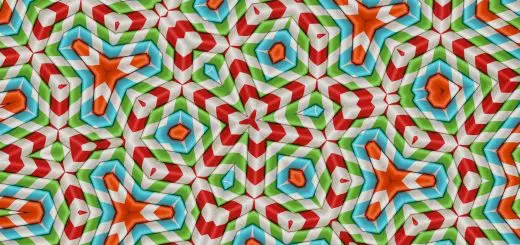Taweret: Hippopotamus Goddess of Childbirth

Looking for more amazing products? Check out our online store and explore our collection here! Happy shopping!
Before diving in, please note: This post is for informational purposes only. If you’d like to know more about how we approach topics, feel free to check out our friendly Disclaimer Page.
Hey there, amazing readers! 
We’re committed to delivering quality posts, and your support (even just sticking around despite the ads) means everything to us. So, bear with us, and thanks for helping us keep the good vibes rolling. Now, on to the fun stuff!
TRANSLATE BUTTON AT THE END OF THE ARTICLE
A Quick Overview
Taweret, the ancient Egyptian goddess of childbirth and fertility, is often depicted as a protective deity with the body of a pregnant hippopotamus, the limbs of a lion, and the head of a crocodile.
She was revered by ancient Egyptians for her role in ensuring safe pregnancies and successful childbirths.
Taweret’s presence can be traced back to the earliest periods of Egyptian history, where she played a vital role in the lives of both the common people and the royal family.
This article delves into the origins, symbolism, influence, and myths surrounding Taweret, shedding light on her enduring significance in both ancient and modern cultures.
The Origins of Taweret: An Ancient Egyptian Deity
Taweret’s origins can be traced back to the Middle Kingdom period of ancient Egypt (c. 2055-1650 BCE).
She was believed to have emerged as a protective deity associated with childbirth, fertility, and the household.
Taweret’s name is derived from the Egyptian word "tȝ-wrt," meaning "the great one," emphasizing her importance and power in the pantheon of Egyptian deities.
Over time, Taweret became increasingly popular among the Egyptian people, with numerous temples and shrines dedicated to her worship across the Nile River valley.
Depiction of Taweret in Egyptian Art and Hieroglyphs
In ancient Egyptian art, Taweret is often depicted as a composite creature with the body of a pregnant hippopotamus, the limbs of a lion, and the head of a crocodile.
This unique combination symbolized the protective and nurturing aspects of Taweret’s divine nature.
Hieroglyphic inscriptions often portrayed her with a headdress adorned with the sun-disk and cow horns, emphasizing her role as a symbol of fertility and motherhood.
Taweret was also commonly depicted holding the ankh symbol, representing life and fertility.
Taweret’s Role as the Goddess of Childbirth and Fertility
Taweret was primarily revered as the goddess of childbirth and fertility in ancient Egypt.
Pregnant women often invoked her protection to ensure a safe delivery and healthy child.
Taweret was believed to ward off malevolent forces that could harm both mother and child during pregnancy and childbirth.
Her nurturing and protective qualities made her a popular deity among women seeking her blessings for successful pregnancies and deliveries.
Taweret was also associated with the protection of children, ensuring their well-being and growth.
The Symbolism of Taweret’s Hippopotamus Form
The hippopotamus, a creature known for its aggressive nature and protective instincts, was chosen to symbolize Taweret’s role as a guardian deity.
In ancient Egyptian mythology, the hippopotamus was also associated with fertility and rebirth due to its association with the annual flooding of the Nile River, which brought life-giving waters to the arid land.
Taweret’s hippopotamus form represented both the dangers and the life-giving abilities of the natural world, highlighting her dual role as a protector and a bringer of fertility.
Taweret’s Influence on Ancient Egyptian Daily Life
Taweret’s influence extended beyond childbirth and fertility to various aspects of daily life in ancient Egypt.
She was believed to safeguard homes and families from evil spirits and malevolent forces.
Taweret was also associated with domesticity and the protection of household belongings.
Her presence in Egyptian households brought a sense of security and stability, ensuring the well-being of both family members and domestic animals.
Taweret’s popularity among the common people attests to her enduring significance in Egyptian society.
Temples and Statues Dedicated to Taweret
Throughout ancient Egypt, temples and statues were dedicated to Taweret to honor and invoke her protective powers.
The most notable temple dedicated to Taweret was located in Karnak, where she was worshipped alongside other deities associated with childbirth and fertility.
Statues of Taweret adorned with symbols of motherhood and protection were placed in homes and temples to seek her blessings for safe pregnancies and deliveries.
These sacred spaces served as centers of worship and offerings to Taweret, reinforcing her importance in the lives of the ancient Egyptians.
Taweret’s Protective Role in Pregnancy and Childbirth
As the goddess of childbirth, Taweret played a crucial role in ensuring the safety of pregnant women and their unborn children.
Women would often pray to Taweret for protection during pregnancy and childbirth, seeking her guidance and blessings for a successful delivery.
Taweret was believed to ward off evil spirits and malevolent forces that could pose a threat to the mother and child.
Her nurturing and protective nature instilled a sense of comfort and reassurance in expectant mothers, emphasizing the importance of her role in facilitating safe pregnancies and deliveries.
Rituals and Offerings to Honor Taweret
Ancient Egyptians conducted rituals and offered gifts to honor Taweret, seeking her favor and protection in matters of childbirth and fertility.
Offerings of food, flowers, incense, and amulets were presented to Taweret in temples and shrines dedicated to her worship.
Women seeking her blessings for safe pregnancies would make offerings and prayers to Taweret, expressing their gratitude and devotion to the goddess.
These rituals were performed with reverence and sincerity, reflecting the deep-seated belief in Taweret’s powers to ensure the well-being of mothers and their children.
Taweret’s Association with Other Egyptian Deities
Taweret was often associated with other Egyptian deities, such as Bes, the god of households and protector of women and children.
Together, Taweret and Bes formed a protective duo, safeguarding homes and families from harm.
Taweret was also connected to goddesses like Hathor, Isis, and Bastet, who shared similar attributes related to motherhood, fertility, and protection.
The interconnectedness of these deities in Egyptian mythology highlighted the importance of female deities in the pantheon and their role in nurturing and safeguarding the Egyptian people.
Taweret’s Continuing Presence in Modern Culture
Despite the decline of ancient Egyptian religion, Taweret’s influence continues to resonate in modern culture.
Her image and symbolism have been preserved in archaeological artifacts, museum collections, and scholarly studies, showcasing her enduring legacy as a goddess of childbirth and fertility.
Taweret’s protective and nurturing qualities have found resonance in contemporary beliefs and practices related to pregnancy and motherhood.
Her presence in popular culture, literature, and art reflects the ongoing fascination with ancient Egyptian mythology and the enduring appeal of Taweret as a symbol of feminine power and protection.
Myths and Legends Surrounding Taweret
Various myths and legends surrounded Taweret in ancient Egyptian mythology, portraying her as a benevolent deity with immense power and compassion.
One myth depicted Taweret as the protector of the sun god Ra during his nightly journey through the underworld, ensuring his safe passage and rebirth at dawn.
Another legend suggested that Taweret was created by the gods to defeat the forces of chaos and protect the cosmic order.
These myths highlighted Taweret’s role as a powerful and benevolent deity, revered for her ability to bring protection and fertility to those who worshipped her.
Taweret’s Relevance in Contemporary Feminism and Childbirth Practices
In contemporary feminism and childbirth practices, Taweret’s symbolism as a goddess of childbirth and fertility continues to hold significance.
Her attributes of protection, nurturing, and strength resonate with modern women seeking empowerment and support during pregnancy and childbirth.
Taweret’s image as a guardian deity has inspired a renewed interest in ancient Egyptian mythology and its depiction of feminine power.
By honoring Taweret’s legacy, women today can find strength and solidarity in embracing their roles as mothers and nurturers, drawing inspiration from the ancient goddess who symbolized the essence of maternal care and protection.
Conclusion
Taweret, the hippopotamus goddess of childbirth in ancient Egypt, remains a revered deity known for her protective and nurturing qualities.
Her origins, symbolism, influence, and myths have shaped the understanding of feminine power and fertility in Egyptian culture and continue to resonate in modern times.
Through temples, statues, rituals, and associations with other deities, Taweret played a vital role in ensuring safe pregnancies and successful childbirths.
Her relevance in contemporary feminism and childbirth practices underscores the enduring legacy of this ancient goddess as a symbol of maternal care and protection.
Taweret’s presence in ancient and modern cultures serves as a testament to the timeless appeal of her divine attributes and the enduring significance of her role as a guardian deity.

The Enlightenment Journey is a remarkable collection of writings authored by a distinguished group of experts in the fields of spirituality, new age, and esoteric knowledge.
This anthology features a diverse assembly of well-experienced authors who bring their profound insights and credible perspectives to the forefront.
Each contributor possesses a wealth of knowledge and wisdom, making them authorities in their respective domains.
Together, they offer readers a transformative journey into the realms of spiritual growth, self-discovery, and esoteric enlightenment.
The Enlightenment Journey is a testament to the collective expertise of these luminaries, providing readers with a rich tapestry of ideas and information to illuminate their spiritual path.
Our Diverse Expertise
While our primary focus is on spirituality and esotericism, we are equally passionate about exploring a wide range of other topics and niches 

To ensure we provide the most accurate and valuable insights, we collaborate with trusted experts in their respective domains 
Our blog originally focused on spirituality and metaphysics, but we’ve since expanded to cover a wide range of niches. Don’t worry—we continue to publish a lot of articles on spirituality! Frequently visit our blog to explore our diverse content and stay tuned for more insightful reads.
Hey there, amazing reader! 
Check out our store here and take a peek at some of our featured products below! Thanks for being awesome!











